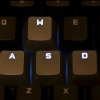Running a 3090 with a 650W PSU
29 minutes ago, Origami Cactus said:I am willing to limit the power slider and voltage to the GPU a bit, because my experience with Pascal is that Nvidia gpus are way out of efficiency curve, so even if you limit their power by 10%, the performance is pretty much the same, maybe 2-3% slower.
No harm in giving it a try if you already have the PSU sitting around doing nothing. If you have issues it'll just shut down randomly during games or whatever which isn't really the end of the world. Use 2 separate PCIe cables and you'll likely want to switch the RMi to single rail mode via Corsair iCue software. Power limiting the card slightly might help but it's probably going to be you either have issues or you don't, like Kilrah mentioned it's the transient spikes and noise on the +12V rail that is causing the PSUs to shut down and not necessarily sustained load exceeding the OCP/OPP protections.

















Create an account or sign in to comment
You need to be a member in order to leave a comment
Create an account
Sign up for a new account in our community. It's easy!
Register a new accountSign in
Already have an account? Sign in here.
Sign In Now